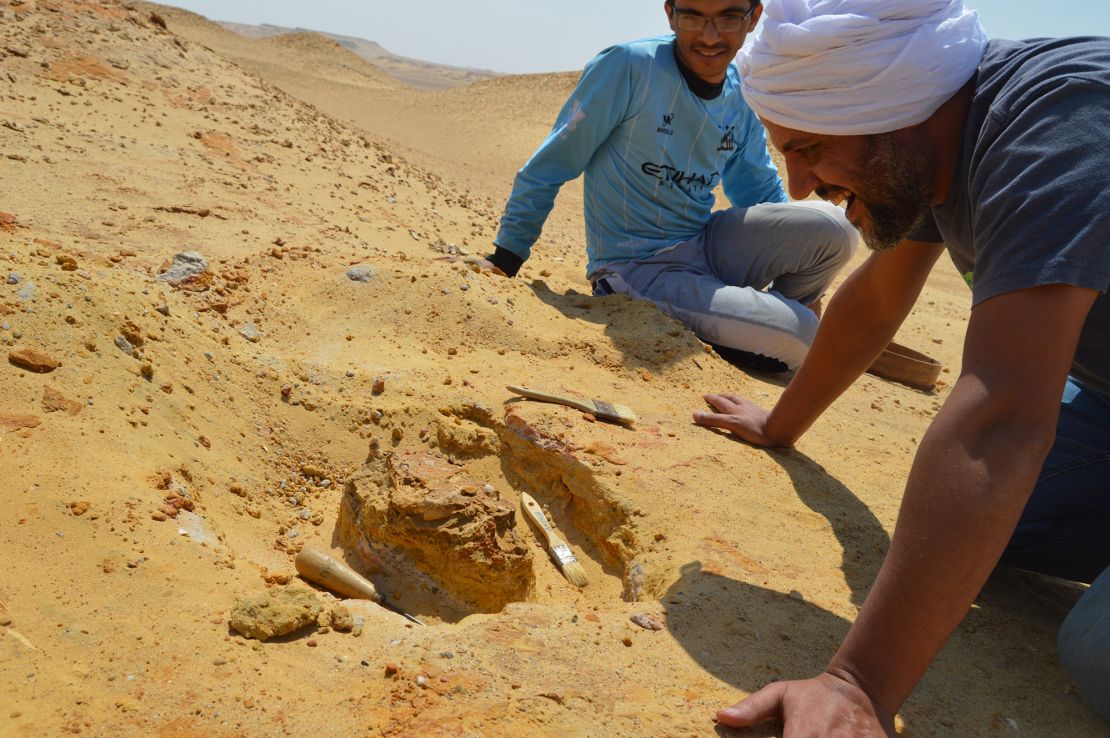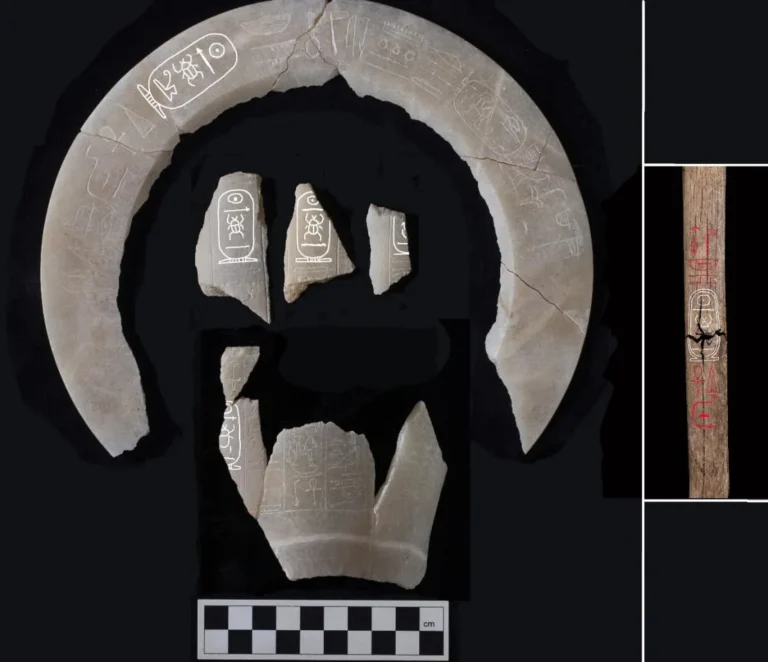Now, an international team of paleontologists has found a new piece of the puzzle — a nearly complete skull of a previously unidentified species of hyaenodonta. The discovery could bring scientists one step closer to understanding these ferocious beasts and their evolutionary history.
The fossil, which was unearthed in the Fayum Depression of Egypt’s Western Desert, is the most complete skull of the hyaenodonta subfamily Hyainailourinae to be found in Africa. The skull dates back to the early Oligocene Epoch around 30 million years ago, according to a study published Monday in the Journal of Vertebrate Paleontology.
When the study authors uncovered the skull in 2020, they shouted excitedly as they realized their rare find, recalled lead author Shorouq Al-Ashqar, a doctoral student at Mansoura University Vertebrate Paleontology Center and a research assistant at American University in Cairo.
“It was an amazing moment …,” Ashqar said. “This skull is important to us, not only because it’s complete and three dimensional, and actually it’s a beautiful one, but also it provides us with new traits to know more about this extinct group of carnivorous animals.”
The researchers named the leopard-size species Bastetodon syrtos as a nod to the cat-headed ancient Egyptian goddess Bastet because of the species’ unique shorter snout compared with other hyaenodonts, according to the study. Combined with sharp, knifelike teeth, the snout would have given the creature an extremely powerful bite, according to Ashqar.
“We can frankly say that Bastetodon was the king of the ancient Egyptian forest,” Ashqar said.
The fossil provides a rare glimpse into a time of global environmental changes and faunal turnover, when some species go extinct while new ones are introduced due to varying changes in the habitat. Those changes helped determine the cat and dog predators seen today, researchers said.
Ancient apex carnivores
Hyaenodonta fossils have been found across North America, Europe, Asia and Africa. Some were as big as rhinos, while others resembled small weasels.
During the Oligocene period, the Fayum Depression was a lush, tropical rainforest. Bastetodon would have preyed on primates such as Aegyptopithecus, an ancient relative of humans, as well as early hippos and elephants.

“I think of them as like really beefy wolverines or basically like pitbulls. They have really big heads that were just covered in muscle,” said study coauthor Dr. Matthew Borths, curator of fossils at the Duke Lemur Center Museum of Natural History at Duke University in Durham, North Carolina.
It is rare to find ancient carnivore fossils because there are fewer carnivores in an ecosystem than other animals such as herbivores. (For instance, you’re more likely to see a squirrel or a deer on a hike than a cougar, Borths said.) And often, only teeth or fragments of skulls are found, he added.
The discovery of such a complete skull allows researchers to learn concrete traits of the animal, such as how big muscle attachments were compared with the size of its teeth, the size of its brain or even the strength of its sense of smell, Borths said.
Researchers also compared the Bastetodon skull with the fossils of another, bigger hyaenodonta species found in Africa about 120 years ago. Dubbed Sekhmetops by the study authors, the latter group was originally thought to be related to a European group of hyaenodonts. While there were only jaws and cheekbones found of the larger species, the researchers were able to compare findings from those remains with the Bastetodon skull and demonstrate that both carnivores belonged to the same group of hyaenodonts that originated in Africa.
“It is rare to find such a complete specimen, preserving not just the robust teeth but also delicate aspects of cranial anatomy,” said Dr. Nancy Stevens, an anthropology professor and director of the Museum of Natural History at the University of Colorado Boulder, in an email.
“It is only with detailed analyses of specimens like this that we can explore the complex movement patterns of predators across the landscapes of the past,” said Stevens, who was not involved with the study. “This gives rise to a better understanding of the faunal dynamics around us today.”
Faunal turnover
The Eocene-Oligocene boundary was a global cooling event that occurred about 34 million years ago, causing mass extinction and major faunal turnover. The hyaenodonts that survived then showed how adaptable and resilient the animals were, Borths said.
A few million years later, however, they went extinct and were replaced by the relatives of dogs, cats and hyenas. By filling in the gaps of the fossil record, paleontologists can better understand why the once successful hyaenodonts died out and how much adaptation and pressure from the environment a lineage can handle, Borths added.
“The end of the Hyaenodonta in the late Oligocene shows how climate change, competitive pressures and changes in prey availability affected carnivores,” said Dr. Cathrin Pfaff, a postdoctoral researcher and lecturer at the Institute of Palaeontology at the University of Vienna in Austria. She was not involved with the study.
“The fact that they lost out to cats and dogs in their evolution is still a mystery but might be caused by their highly specialized dentition,” Pfaff said in an email, referring to the arrangement and development of the animals’ teeth. “Because of this, such a complete find as described here brings us a step closer to solving the mystery, even (if) it is just a medium sized specimen.”















